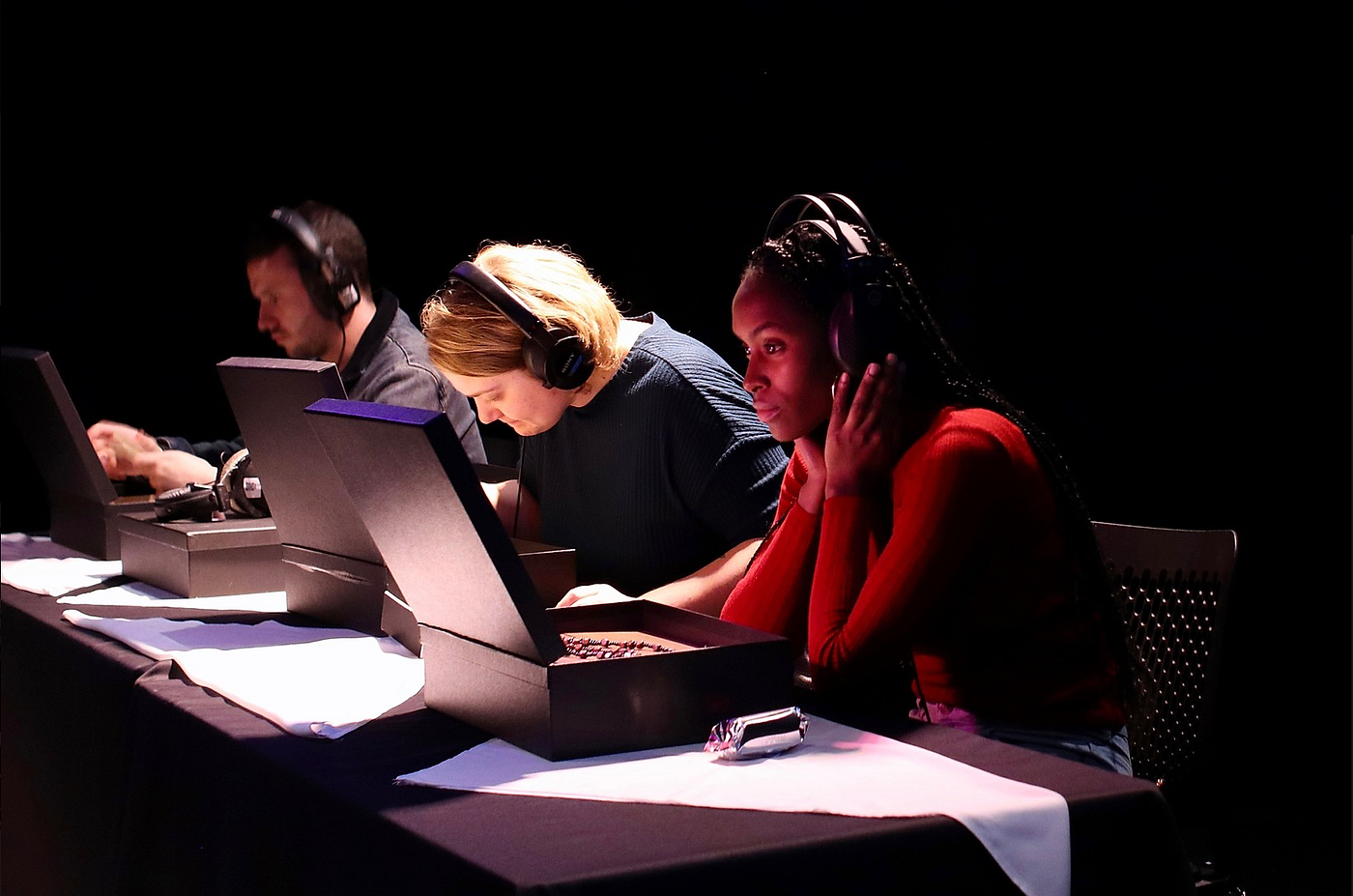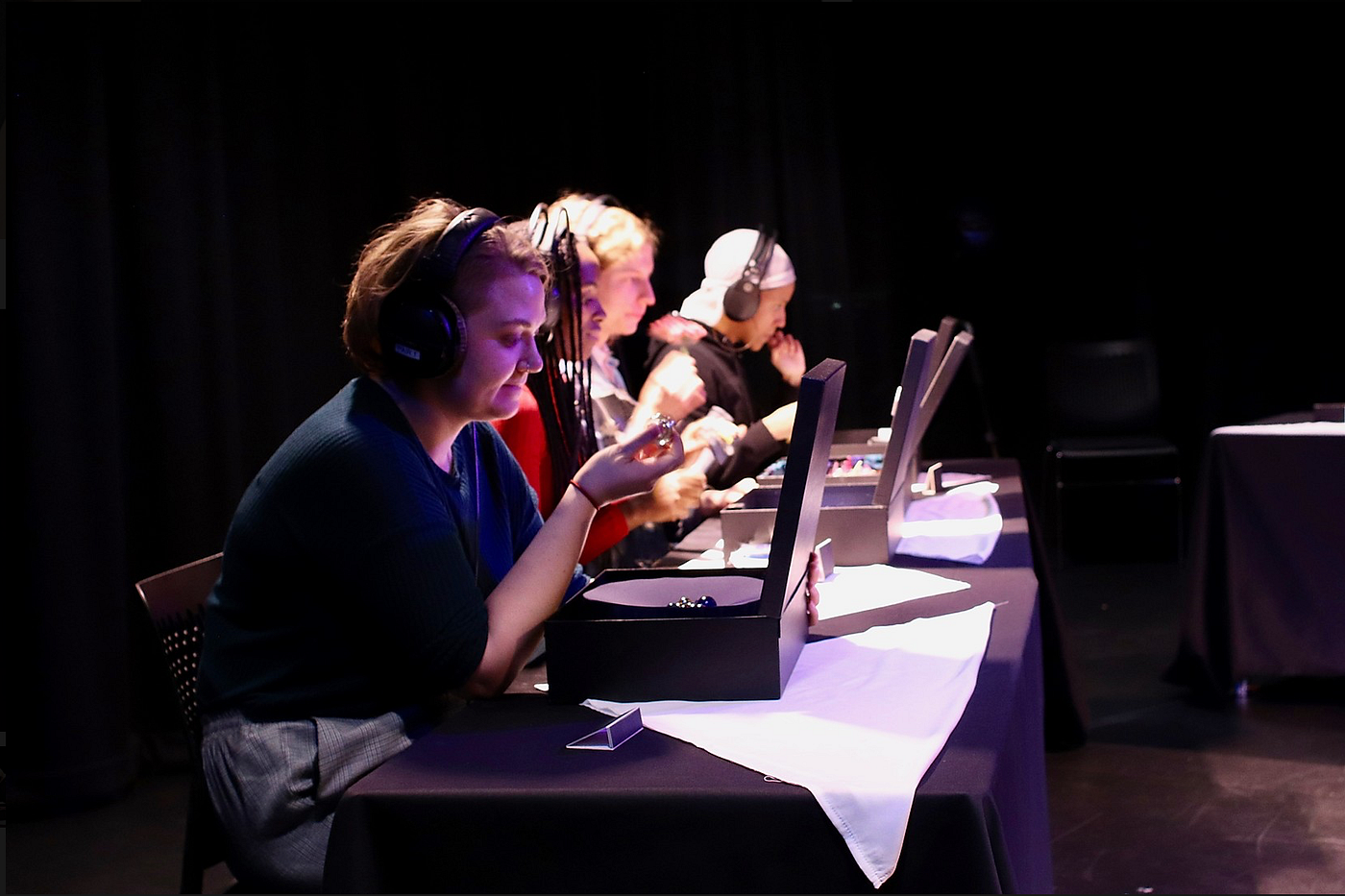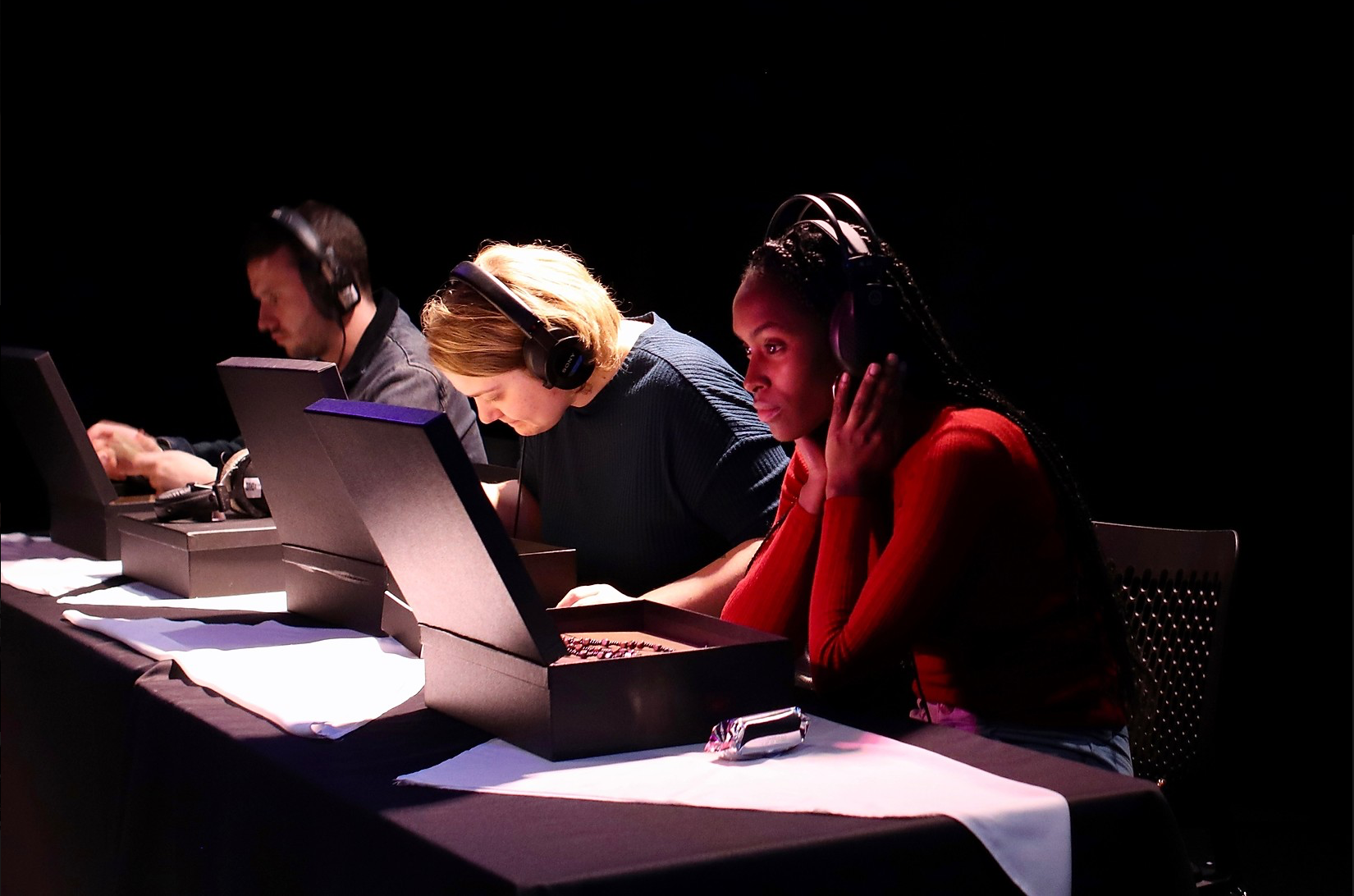
(Full disclosure: I have friendships with members of the crew and cast.)
The set up is simple. Members of the audience sit four to a table. There are boxes in front of us, each with dates and names on the front and a pair of headphones on top. Inside each box is a model vignette with a recorded story of a queer hero. Jessi (Rachel Copel) compiled hundreds of these boxes and then reduced it down to twelve. Now she wants to share the information contained in the boxes with us.
There is a sense of play to the proceedings. Jessi is a very excitable host and it is contagious. She plays games with us in between boxes and teaches us little songs with movements. We have a song to sing before we open the box and a little shuffling dance as we move two chairs to the left to open up a new box.
After sitting and performing our box opening ritual, a pre-recorded story about the relevant person would play. The stories last about five minutes and give a nice overview of why that particular person is of interest. Jessi conveys a passion for her subject material in her narration and is quite humorous. It sounds like a short podcast made by a friend about people she likes.
The two chair shuffle is a nice touch and it ensures a decent amount of movement takes place, as well as making sure we all experience different stories. Of the five boxes I opened I only previously knew about Jospehine Baker (the dancer who smuggled secrets in her sheet music) and Marsha P. Johnson (who started the Stonewall Riots with the ‘Shotglass Heard Around the World’).

There are various tactile aspects to the boxes. One has us looking for secrets using a UV blacklight and another box makes a game of firing paper stars using a catapult. All the boxes seem to be made with genuine affection, while also being just a little bit unpolished (which is charming). You can imagine this woman sitting in her home and making these boxes with care and attention to detail. Johnson’s box was particularly pleasing, because it contained fresh flowers which we could use to make a flower crown. The smell and the feel of the flowers was lovely and it was a good task to do while listening to the story.
Get Thomas Jancis’s stories in your inbox
Join Medium for free to get updates from this writer.
SubscribeSubscribe
The games we played in between rounds were fun. A game of Telephone had us starting by loudly proclaiming “You won’t believe what I heart!” and having to reply “Please tell me!” or pass your turn with a haughty “No! I don’t care for gossip.” To opt out of a game of questions we had to cross our arms and act as if we were peering over a pair of glasses. This was yet another thing to remember.
The games always seem to have a little extra layer added. An audience member interviews another about a hero of theirs while a third does a drawing with the non-dominant hand. It seemed to be more complicated and game driven than needed.
Towards the end of the show, there was the introduction of a plot and a threat which we needed to help resolve. This addition did seem rather unnecessary and the audience seemed confused about what they had to do. I slipped straight into puzzle solving mode because I want us to “win.” What can I say? Give me a time limit, puzzles and a threat and I get very excited.
I found This Side Up to be a very educational and charming experience that I feel is deserving of a wider audience and I would especially like to see this taken to schools and museums.
THIS SIDE UP has concluded.
NoPro is a labor of love made possible by our generous Patreon backers. Join them today!
In addition to the No Proscenium web site, our podcast, and our newsletters, you can find NoPro on Twitter, Facebook, YouTube, Instagram, in the Facebook community Everything Immersive, and on our Slack forum.
Office facilities provided by Thymele Arts, in Los Angeles, CA.





















Discussion